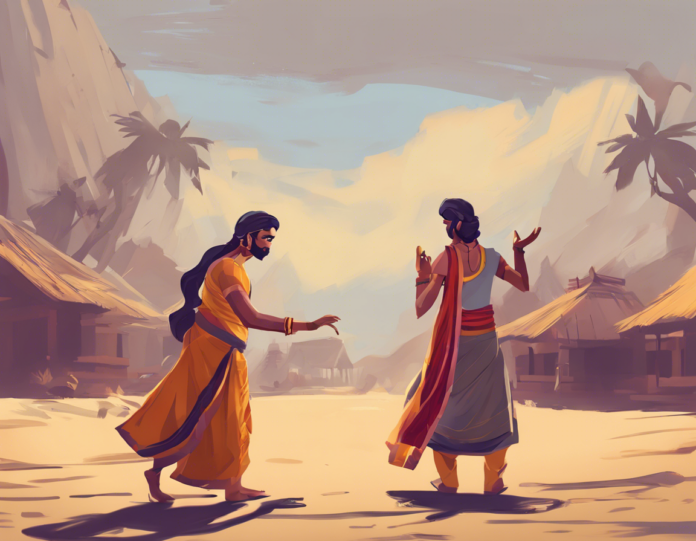In the heart of Lahore, Pakistan lies a historic neighborhood that has fascinated and captivated people for generations – Heeramandi. This bustling area, with its narrow winding streets and intricate architecture, has a rich and storied past that continues to intrigue visitors to this day. From its origins as a hub of culture and entertainment to its resilience in the face of changing times, Heeramandi is a place that holds many secrets waiting to be uncovered.
The Beginnings of Heeramandi
Heeramandi, which translates to “the courtyard of the prostitutes,” has a history that dates back to the Mughal era in the 17th century. It was originally founded as a red-light district, known for its dancing girls, courtesans, and musicians who entertained the nobility and elite of the time. Despite its controversial beginnings, Heeramandi quickly grew into a center of art, culture, and innovation, attracting poets, artists, and intellectuals from far and wide.
The Golden Era of Heeramandi
During the heyday of the Mughal Empire, Heeramandi thrived as a place where creativity and talent flourished. The courtesans of Heeramandi were not just skilled in the arts of seduction but were also accomplished poets, musicians, and dancers in their own right. They held a unique position in society, serving as patrons of the arts and influencing the cultural landscape of the time.
Intrigue and Scandal
Despite its reputation as a center of culture and refinement, Heeramandi was not immune to scandal and intrigue. The intrigues of the courtesans and their patrons often spilled out into the streets, creating a tapestry of drama and betrayal. Legends and folklore abound about the secret romances, clandestine affairs, and political machinations that took place behind closed doors in Heeramandi.
Resilience in the Face of Adversity
As the political and social landscape of Lahore changed over the centuries, Heeramandi faced challenges and obstacles that threatened its existence. From colonial rule to the partition of India and Pakistan, the neighborhood weathered many storms and upheavals. Despite adversity, the spirit of Heeramandi endured, with the descendants of its original residents continuing to keep the legacy of their ancestors alive.
Rediscovery and Revival
In recent years, Heeramandi has undergone a revival of sorts, as efforts are made to preserve its cultural heritage and legacy. The narrow lanes and historic buildings of the neighborhood are being restored, and initiatives are being undertaken to promote Heeramandi as a center of arts and culture once again. Visitors can now explore the rich history of the area through guided tours, cultural events, and exhibitions that celebrate its past and present.
Frequently Asked Questions (FAQs)
1. What is the significance of Heeramandi in Lahore’s cultural history?
Heeramandi holds a special place in Lahore’s cultural history as a center of art, music, and dance. It was a hub of creativity and talent during the Mughal era and continues to be revered for its contribution to the city’s cultural landscape.
2. How did Heeramandi get its name?
Heeramandi, which means “the courtyard of the prostitutes,” was named for the courtesans and dancing girls who resided there during the Mughal era. Despite its origins, Heeramandi was also a place of refined culture and artistic excellence.
3. What can visitors expect to see in Heeramandi today?
Visitors to Heeramandi can explore its historic lanes, admire its intricate architecture, and learn about its fascinating past through guided tours and cultural events. The neighborhood is also home to artists, musicians, and poets who continue to keep its legacy alive.
4. Is Heeramandi open to the public for exploration and tours?
Yes, Heeramandi is open to the public, and guided tours are available for those interested in delving into its history and culture. Visitors can immerse themselves in the sights and sounds of this historic neighborhood and gain a deeper understanding of its significance.
5. How has Heeramandi adapted to modern times while preserving its heritage?
Heeramandi has adapted to modern times by embracing its cultural heritage and promoting itself as a center of arts and culture. Efforts are being made to restore its historic buildings, showcase its artistic traditions, and engage with the community to ensure its legacy endures.
6. What is the best way to experience Heeramandi’s charm and allure?
To experience the charm and allure of Heeramandi, visitors are encouraged to take a leisurely stroll through its streets, engage with local artists and performers, and participate in cultural events and workshops that celebrate its vibrant history.
7. How has Heeramandi influenced the cultural identity of Lahore?
Heeramandi has played a significant role in shaping Lahore’s cultural identity through its artistic traditions, musical heritage, and literary contributions. The neighborhood continues to be a source of inspiration and creativity for artists and performers in the city.
8. Are there any famous personalities associated with Heeramandi?
Heeramandi has been home to many famous personalities throughout history, including renowned poets, musicians, and artists. Some of the most famous courtesans and dancers of the Mughal era were residents of Heeramandi and left a lasting impact on the cultural scene of the time.
9. What makes Heeramandi a must-visit destination for cultural enthusiasts?
Heeramandi is a must-visit destination for cultural enthusiasts due to its fascinating history, architectural beauty, and vibrant arts scene. Visitors can immerse themselves in the rich tapestry of cultural traditions that have been preserved and cherished in this historic neighborhood.
10. How does Heeramandi continue to inspire creativity and innovation today?
Heeramandi continues to inspire creativity and innovation through its artistic community, cultural events, and educational initiatives. The neighborhood serves as a living testament to the resilience and ingenuity of its residents, who are dedicated to ensuring that its legacy endures for future generations to enjoy.










